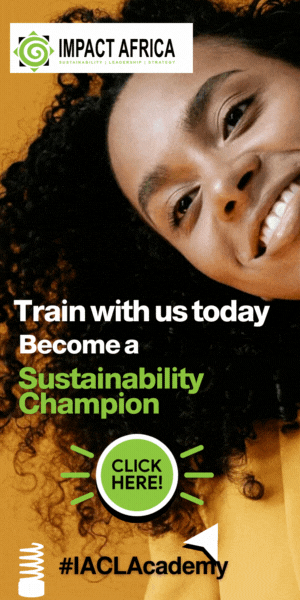Urban green spaces are areas within cities and towns covered with vegetation and dedicated to nature, recreation, or environmental protection. These spaces are essential for providing a natural environment within urban settings, offering a range of ecological, social, and health benefits to city residents. Urban green spaces can take various forms, including Parks especially public parks which are large, open areas that provide space for recreation, sports, picnics, and relaxation. Examples include Uhuru Park and Uhuru Gardens in Kenya.
Other urban green spaces include botanical gardens which are areas dedicated to the collection, cultivation, and display of a wide range of plants, often for scientific and educational purposes. In Kenya we have Arboretum. There are also community gardens which are plots of land where residents can grow vegetables, fruits, and flowers. These gardens foster community interaction and provide access to fresh produce.
We have green roofs, which are constructed with soil and vegetation to cover the rooftops and assist control stormwater runoff, lower building energy consumption, and add more green space to highly populated regions. These have become popular in many affluent metropolitan settings, where the top is a level surface that allows for the planting of tiny trees or plants in place of the typical sheet roofing.
Urban forests can be seen in the Nairobi Central Business District, where walkways are lined with trees that provide shade, improve air quality, and add aesthetic value to the city. This campaign was created primarily for use on Nairobi’s main highways, bypasses and in the city center. Linear parks are sections of green space designed to mimic man-made or natural elements such as highways, railroads, or rivers. They offer paths for bicyclists, walkers, and wildlife migratory routes. Nairobi is home to the Nairobi National Park and the Karura Forest area, which provide opportunities for hiking, biking, and other outdoor sports.
Read also: Sustainable Urbanization and Agglomeration In Africa
In many gated communities in Nairobi, we have secluded areas such as playgrounds and sports fields where kids play games and sometimes even hold sporting events. There are also designated spaces within parks or neighborhoods with playground equipment, providing safe areas for children to play. There are also open areas for sports like soccer, baseball, and tennis, offering space for physical activity and organized sports. Open areas often surrounded by buildings, featuring greenery, seating, and spaces for social gatherings or events. Enclosed spaces within or between buildings, often landscaped with plants and trees, offering a tranquil retreat for residents and workers.
Small bodies of water in parks or residential areas that serve as habitat for aquatic life and create a calm environment for locals are examples of other urban green spaces. Man-made wetlands also aid in stormwater management, lessen floods, and support wildlife in urban environments. Sustainable city design must include urban green areas because they enhance the quality of life for citizens, safeguard the environment, and strike a balance between urban growth and nature. Cities need lush green areas to safeguard the environment and improve people’s quality of life, such as parks, gardens, and green roofs.
Urban green areas play a significant part in climate change because of the absorption of carbon dioxide (CO2) by plants and trees, which lowers the gas’s overall concentration. Cities usually experience higher temperatures than their rural surrounds because of the widespread use of concrete and asphalt, which both absorb and hold heat. Green spaces help to cool down metropolitan areas by offering shade and encouraging evapotranspiration, which is the process by which plants release moisture into the air to lower temperatures.
Cities’ biodiversity is preserved in part because a variety of species, such as insects, birds, and small mammals, rely on urban green spaces as their home. Blooming plants that entice pollinators, like bees and butterflies, can be used for gardening and green roof construction. Ecosystems depend on pollinators for their health and for plant reproduction.
Urban areas can avoid flooding by using green spaces to absorb precipitation and reduce runoff. Additionally, groundwater supplies are replenished by this natural water management system. Before contaminants enter rivers, lakes, or the ocean, vegetation can filter them out, enhancing the quality of the water.
According to research, having access to green spaces helps lessen stress and anxiety, which might enhance mental health. Enjoying a break from the bustle of the city is possible in the serene surroundings of nature. In green spaces like parks and gardens, one can engage in physical activities like walking, cycling, and running. Engaging in these activities is crucial for preserving physical health and avoiding diseases linked to a poor lifestyle.
Green spaces function as common locations where individuals can congregate, interact, and partake in leisure pursuits, cultivating a feeling of community and inclusion. Property values frequently rise in neighborhoods that are close to green areas, which improves local appeal and promotes economic stability. Beautiful parks and gardens can attract tourists, increasing local travel and generating income from leisure-related businesses.
Cities can save energy costs, minimize building cooling expenses, and increase the longevity of roofing materials by adding green roofs to their buildings, which shield them from harsh weather. To create resilient and sustainable urban settings, urban green spaces integrate nature into city planning and preserve natural areas, hence promoting sustainable land use. Urban green areas play a critical role in developing livable, resilient, and sustainable cities by offering these environmental, social, and economic advantages.





